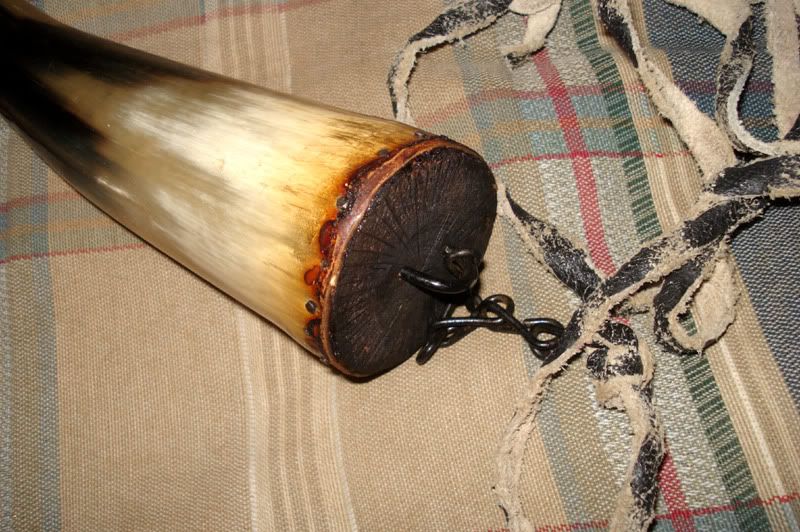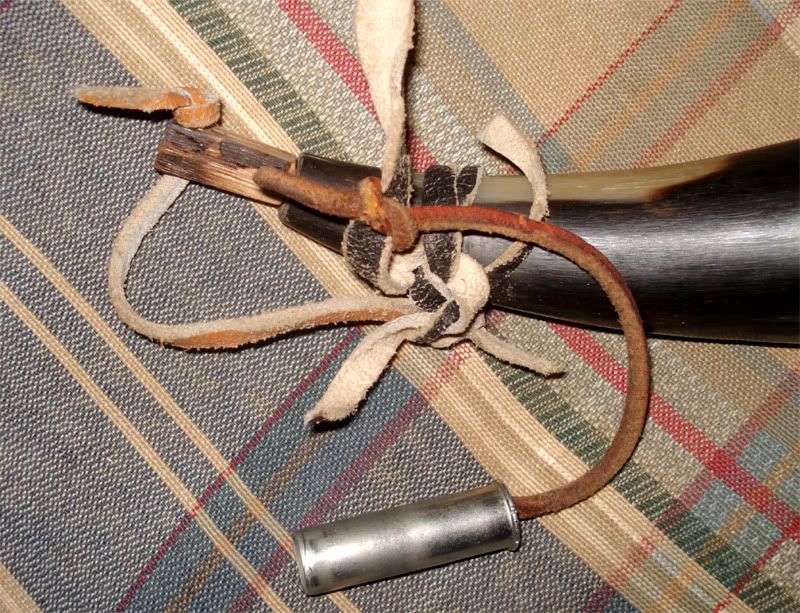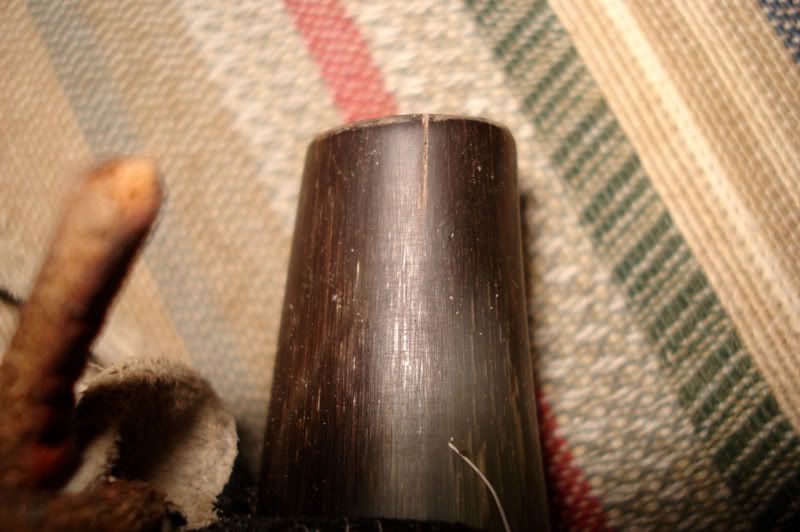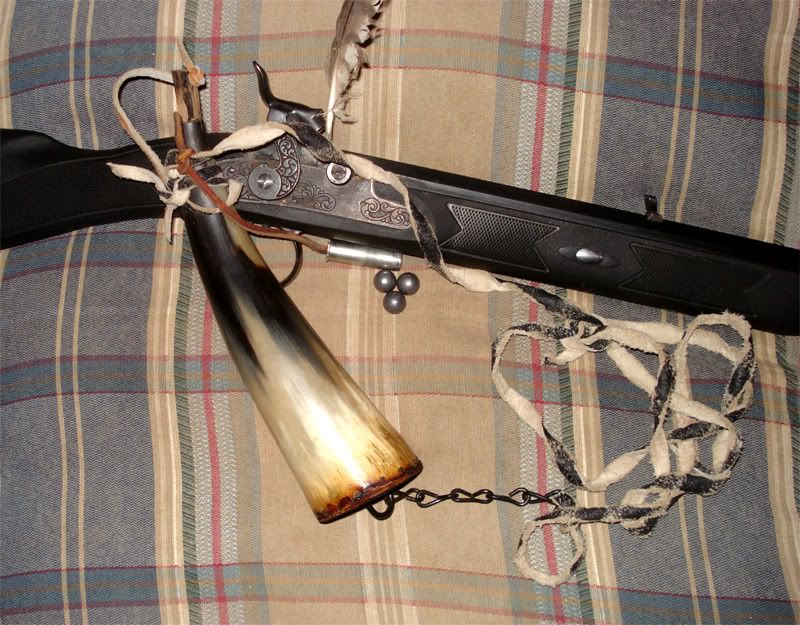Josh Smith
45 Cal.
- Joined
- Sep 24, 2010
- Messages
- 907
- Reaction score
- 0
Prior to that, Grandma and Grandpa Smith would go to Texas each winter, leaving around a week after Thanksgiving and generally returning some three or four months later.
Before they would leave, they would ask us what we wanted from Mexico. They would park their fifth wheel at a campground near the border and cross over to tour and shop.
I generally end up with bullwhips and pesos. However, one year they surprised my brother and me with mounted bull horns.
Those hung in my room at home, then the house I managed to get while in college, and in every apartment and house after that.
They were getting pretty ragged, and I hung them up in the garage above the metal kitchen table which belonged to my Grandma and Grandpa Burkhardt. On that table I set up a lead furnace my Grandpa Smith had given me, and with a few other items I purchased, proceeded to produce bullets for my .45acp.
Those bull horns were something to look at, but I never could bring myself to throw them out.
This morning I had an idea. Knowing that they'd go sooner or later, one way or another, I began work on something I simply don't have the money to buy while I'm laid off:
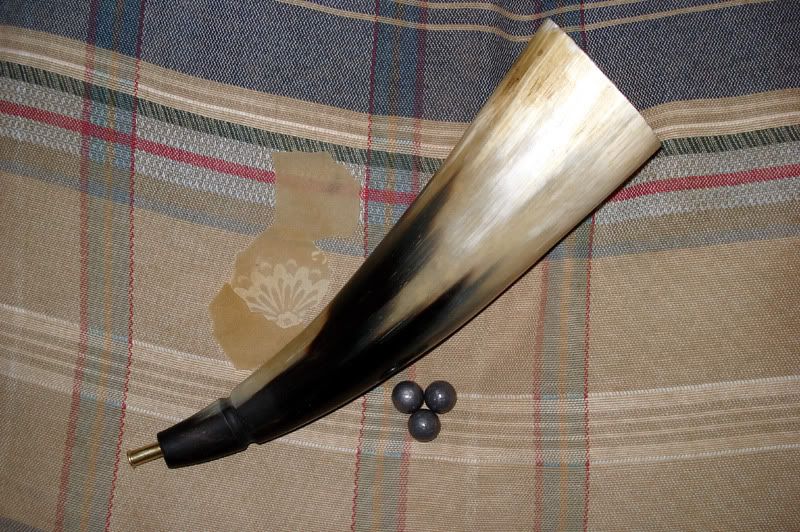
Conceived at 4am this morning, I sawed one off, washed it up, and with judicious application of files, 2000 grit wet sandpaper, and a fine toothed hacksaw, I'm well on my way to having a powder horn.
This evening I will take a walk in the woods and find a good, seasoned limb the right size around, and make the bottom. I'll likely tea or coffee stain the wood, work the warmed horn around it, and secure it with tacks or with wooden pegs - I've not decided yet.
Though I'd like to do the linseed oil thing with the wood, I'll need the powder horn before those many weeks are up. I think I will therefore cheat and use varnish on this one; after all, I have another horn to save. The varnish will serve to seal the horn around the wood as well.
If I haven't tossed a broken bullwhip, I'll use a strand from it as a leather carry sling. Here's to hoping as I do think I tossed it.
Not having a violin key handy (thank God there are no violins around here!), I am debating whether to keep the .22 shell in place. While it is brass, I don't want metallic cartridges around my muzzleloading stuff. I may see if my dad still has his olde guitar from the '70s, and if I might have a key off of that to use.
I'd rather not use wood or cork due to their propensities to change size with humidity.
Now, I just have to figure out what to use for a powder measure. I'm sure I'll dig through the stuff I inherited from all four grandparents and stay with that theme.
It's not the best powder horn I've ever seen, but for not ever having done this before (and really not being good at woodworking), I think it's turning out OK.
Josh
Before they would leave, they would ask us what we wanted from Mexico. They would park their fifth wheel at a campground near the border and cross over to tour and shop.
I generally end up with bullwhips and pesos. However, one year they surprised my brother and me with mounted bull horns.
Those hung in my room at home, then the house I managed to get while in college, and in every apartment and house after that.
They were getting pretty ragged, and I hung them up in the garage above the metal kitchen table which belonged to my Grandma and Grandpa Burkhardt. On that table I set up a lead furnace my Grandpa Smith had given me, and with a few other items I purchased, proceeded to produce bullets for my .45acp.
Those bull horns were something to look at, but I never could bring myself to throw them out.
This morning I had an idea. Knowing that they'd go sooner or later, one way or another, I began work on something I simply don't have the money to buy while I'm laid off:

Conceived at 4am this morning, I sawed one off, washed it up, and with judicious application of files, 2000 grit wet sandpaper, and a fine toothed hacksaw, I'm well on my way to having a powder horn.
This evening I will take a walk in the woods and find a good, seasoned limb the right size around, and make the bottom. I'll likely tea or coffee stain the wood, work the warmed horn around it, and secure it with tacks or with wooden pegs - I've not decided yet.
Though I'd like to do the linseed oil thing with the wood, I'll need the powder horn before those many weeks are up. I think I will therefore cheat and use varnish on this one; after all, I have another horn to save. The varnish will serve to seal the horn around the wood as well.
If I haven't tossed a broken bullwhip, I'll use a strand from it as a leather carry sling. Here's to hoping as I do think I tossed it.
Not having a violin key handy (thank God there are no violins around here!), I am debating whether to keep the .22 shell in place. While it is brass, I don't want metallic cartridges around my muzzleloading stuff. I may see if my dad still has his olde guitar from the '70s, and if I might have a key off of that to use.
I'd rather not use wood or cork due to their propensities to change size with humidity.
Now, I just have to figure out what to use for a powder measure. I'm sure I'll dig through the stuff I inherited from all four grandparents and stay with that theme.
It's not the best powder horn I've ever seen, but for not ever having done this before (and really not being good at woodworking), I think it's turning out OK.
Josh





